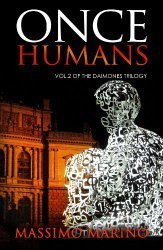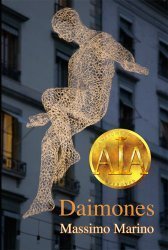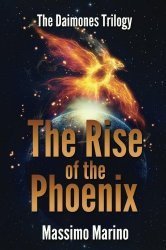Massimo Marino's Blog: The Ramblings and the Rumblings, page 17
August 20, 2014
Pacing, Plotting, and Causality
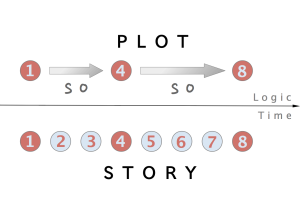 Plotting is in the story itself. Pacing is how the writer unravels the story.
Plotting is in the story itself. Pacing is how the writer unravels the story.
First, what makes up a good plot? Interesting characters doing either interesting things, or placed in challenging situations that test their beliefs and resolve is what keeps readers turning pages. But is that all there is to a plot?
No one wants to read about two university graduates at the top of their class, who get good jobs, meet and then marry. They have two perfect children who also get good grades and are always well behaved. The couple stays faithful and in love until they die at age 100 within minutes of each other.
Although we might wonder how they do it, what that plot lacks is a lot of C. C stands for Conflicts and Challenges in their lives. That mythical couple would be as boring as a detective with no crime to solve, rolling thumbs at his desk, and waiting for a call that never arrives.
Plots can be event, character and/or theme driven as long as there is something that makes readers want to keep reading: suspense. Once the plot is in place then pacing comes into play. (Apologies for the alliteration.)
There is no single way to structure your pacing.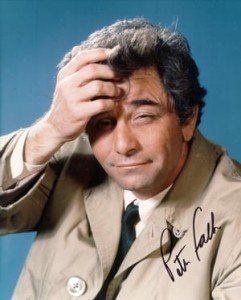
The end can even be revealed in the beginning, and the rest of the story can show how the end was reached. Think of all the COLUMBO series. We know from the first few scenes who the murderer is, but then we’re glued to the TV to watch Peter Falk and his raincoat and his famous “One more question” to bring down the guilty party.
Some novels start with a prologue that we know at one point will make sense.
For example the warnings the human race receives — and ignores — before the Apocalypse strikes in Daimones .
.
Other times we don’t know how the story ends (unless you are one of those who reads the last page first: too much of Columbo watching). The writer drops hints along the way, and hints are necessary because a reader will be angry if the ending lacks believability. Better that s/he thinks, how clever the writer was to sneak in the clues that went missed.
A good example of sneaky clues is the film THE SIXTH SENSE (Nebula Award for Best Script.) Although the ending seemed like a surprise, when rethinking different scenes all the clues are there.
The writer must decide what to give away and when.
Pacing also involves tension. We need to vary the tension and its pace to not exhaust or bore our readers. You need to vary the pace of your sentence, too, but that’s another issue.
One way to go is with sub plots, making the reader wait to see what happened to character A as we follow character B. Sound to you like cliffhangers? Yes, in a sense, but at least you don’t have to wait for the next book in a series to know what happens. While cliffhangers within a novel keep the tension and create suspense, if I were to put a cliffhanger at the last page of my novels I’d fell like I’m cheating my readers. But opinions differ on this subject.
In short stories there is usual only one plot, but in a novel we can have several different sub plots intersecting. A master at weaving subplots together is John Irving.
there is usual only one plot, but in a novel we can have several different sub plots intersecting. A master at weaving subplots together is John Irving.
With different story lines in a novel we can pick up one while putting another aside. Think in terms of three interwoven sub plots, A B C. The lines are different lengths to show the amount of space devoted to each subplot. It does not need to be equal. However, at the end they must all be resolved. No cliffhangers.
A____B_______A_C______________AB_________C_________CB_______ABC
Not all subplots need to be of the same strength giving us A b C
A_________b__C___________A________bC_____AbC
“Plot is the structure of events within a story and the causal relationship between them. There is no plot without causality.” – S. Andrew Swann
“According to Aristotle’s Poetics, a plot in literature is “the arrangement of incidents” that (ideally) each follow plausibly from the other. Aristotle notes that a string of unconnected speeches, no matter how well-executed, will not have as much emotional impact as a series of tightly connected speeches delivered by imperfect speakers.” The lesson here? A great story and its plot, even with some technical imperfections, will beat a dull but perfectly written novel
“The concept of plot and the associated concept of construction of plot, emplotment, has of course developed considerably since Aristotle made these insightful observations. The episodic narrative tradition which Aristotle indicates has systematically been subverted over the intervening years, to the extent that the concept of beginning, middle, and end are merely regarded as a conventional device when no other is at hand.” Remember that at your next creative writing class!
Lot of a story will extend beyond the bounds of the story itself, but suffice to remember that a plot is a summary of a story, and composed of causal events, which means a series of sentences linked by “and so.” The Causality of the events is what makes a plot. Whereas a story orders events from A to Z in time, the plot makes the logical connection with one event to another in the story (not necessarily the next one) but takes place because of the preceding one.
For Aristotle (as it should for everyone), the plot is the most important element in a story, and the events of the plot must causally relate to one another as being either necessary or probable. Aristotle goes on to consider whether the tragic character suffers (pathos), and whether or not the tragic character commits the error with knowledge of what he is doing, his/her challenges.
Thus, plot your story, and add logic to the events. It’s nothing really new.
Allow me to conclude with the citation from Sallustius that appears in Daimones .
.
“These things never happened, but they are always.”
“Deorum naturae neque factae sunt; quae enim semper sunt, numquam fiunt: semper vero sunt.” – Sallustiu
The post Pacing, Plotting, and Causality appeared first on § Author Massimo Marino.
August 14, 2014
Location, Location, Location
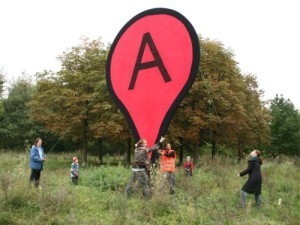 A French novel, from a mainstream author, fell into my hands. Although I had no problems with the vocabulary, the writer started the scenes without providing any idea of the environment where the action took place. To make it worse, he or she did not identify who was speaking. I wasn’t even sure if the character was male or female.
A French novel, from a mainstream author, fell into my hands. Although I had no problems with the vocabulary, the writer started the scenes without providing any idea of the environment where the action took place. To make it worse, he or she did not identify who was speaking. I wasn’t even sure if the character was male or female.
After fighting through several pages, I guessed what was happening and with whom, but I was never sure of the where. I didn’t finish the novel although the write-up on the jacket had intrigued me. I showed the novel to a native French speaker. The same problem surfaced: it wasn’t my French.
That novel’s lack of grounding gave me the idea for this post. I have not yet encountered an Anglophone novel so ungrounded, but I have sometimes had to puzzle out details that a simple sentence would have shown them without making me work hard to figure out where I was or with whom.
When we read, we create mental images of the characters and locations. Our job as writers is to provide the framework to help the reader form those images. Remember? Show, don’t tell.
New writers are more apt to be guilty of not dealing with story locations.
Now, we are faced to a catch-22: readers need to know when and where the action of a novel takes place, but reject pages of description. There’ a secret, though: select enough information so a reader can “see” what the writer saw, but just enough, please. Location descriptions are like good background music that adds to the ambience but doesn’t drown out the movement of the plot.
How a scene is grounded depends on the story. What are some of the ways?
Use outside environments
These could be a planet, nation, city, town, country, farm, beach or forest. Although it is not necessary to have a real place, the reader must feel the place is real. Whenever possible, the details that ground the work should help with plot or character development rather than be thrown in for no reasons. Those are the pages that are skipped by readers.
A comment that a character saw the Eiffel Tower is a dead give away of a location, but not subtle. Something more subtle would be to put the characters into a taxi and have them notice that it was the first Parisian taxi driver that ever drove slowly. The simplest would be to say Paris, France at the top of the chapter. Yet at the same time, the richness of that city calls out for a few details that add to the story. But remember these last words: they need to add to the story. Also details should answer one crucial question: “So what?”
Comments about trucks parked in front of a diner ground a story in a different location than valet parking by a restaurant located on the ground floor of a skyscraper, and prepares the reader’s imagination to different kinds of scenes.
In writing about a location, it is easy to be trapped by clichés such as the Eiffel Tower before. By interweaving the scene into other details, writers can escape that particular danger. For example: beaches with white sands and gentle waves have been described to death, but if the small grains of sand get inside a character’s sandals and irritate his/her feet then we know the person is on or near a beach. If the character wears sandals because the sand was so hot, the writer has grounded the scene with temperature, too.
Smells can be used to create the environment for a scene: the smell of gasoline, pine trees, mud, baking chocolate brownies all create a mood that narrows down place.
Using inside environments
The types of rooms that writers select are another way of grounding. A kitchen large enough for family conferences and games is different from a state-of-the-art kitchen with expensive copper pans that are never used. And shows about the owner character, too. A meal at McDonald’s is different from a meal in an expensive restaurant.
Unlike the Victorian writers who described every piece of furniture, a few details not only ground the reader but tell them about the occupants. Modern sleek furnishings with huge windows overlooking the Hudson River is different from a Cornwall cottage filled with furniture gathered from Aunt This or Uncle That. Trophies from a kid’s football team in the middle of mantle reveal something about the parents’ pride than trophies being tucked away in a closet.
And don’t forget to make it clear when locations are changed. Nothing is worse for a reader to think they are in a city apartment to realize three pages later they are on a farm. Remember: Location, Location, Location.
The post Location, Location, Location appeared first on § Author Massimo Marino.
August 5, 2014
Pump Up Your Descriptions
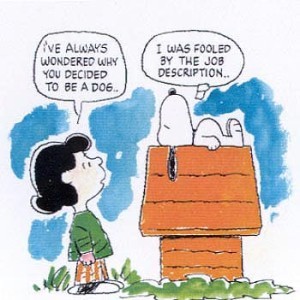 Descriptions puts readers into your story while engaging all their senses — sight, sound, smell, taste, feel. If dialogues move the plot forward, descriptions flesh out scenes.
Descriptions puts readers into your story while engaging all their senses — sight, sound, smell, taste, feel. If dialogues move the plot forward, descriptions flesh out scenes.
Victorian writers over described scenes and gave credence to the statement “That’s more than I need to know.” However, the selective use of details adds to the description.
The most common things we tend to describe are character’s physical appearance, clothing, neighborhoods, housing, furniture, scenery, weather. I personally am not much into characters’ appearances, I give hints and leave the rest to the readers’ imagination.
New writers often break into the story creating author intrusion, especially when describing people. The reader is subjected to a litany of details about height, weight, hair color, etc, that give no chance to the reader’s own vision.
Slightly more experienced writers use the overworked mirror trick, letting the character provide the description: She watched herself in the mirror as she brushed her “long black shiny hair and put a touch of pink lipstick to her full lips, etc.” Ouch!
Showing not telling has to be again your mantra, and constitutes a better way to introduce appearance. A short character can be shown when a character has to stand on a chair to reach the middle cabinets in a kitchen. Overweight shows when struggling into an outfit that refuses to zip, or a man can rest his hand on the stomach that overhangs his belt, or can’t see his feet.
Worse are expressions like “she didn’t look 45,” which I’ve read in any number of books and best sellers. What 45 looks like? Or 32 or 55 for that matter. The people I know from my school years had aged at such different rates that there could have been 20 years between us instead of a mere few 12 months. Stop wondering, I look younger than most 
There are better ways to describe someone appearing younger than their years might be: “Her face was unlined, and she moved with the energy of a young woman. Then he looked at her hands and saw raised veins and age spots.” There, the contrast is created and no one told readers anything. By adding details, the reader’s imagination does the work instead of having to figure out what X number of years look like.
How we manipulate our descriptions changes the story we are telling, err, showing.
Same goes when describing a room. Use the description to create the atmosphere, summon a vision.
Luminescent bulbs on the roof cleared the way. Inside them, a sort of slow-twirling jelly emanated a cold blue light. The two lateral corridors bent after a short while, hiding their ultimate destination so we decided to explore the chapel first. Arranged in rows, wooden benches waited for the faithful, and the altar bore a sign which we were now able to distinguish and recognize: the well-known mutilated human hand—yellowish brown on the white stone—saluted us. Further to the left, an opened book sat on a lectern podium.
We all perceived danger; we had questions running through our minds but no one uttered a word. Slowly, we approached the altar. Three stone steps led to the lectern and everything needed for a mass was in place, but none of us recognized any of the various religious symbols.
From Once Humans: Daimones Trilogy, Vol.2 , Finalist 2014 Readers’ Favorite Book Award in Science Fiction.
, Finalist 2014 Readers’ Favorite Book Award in Science Fiction.
That description tells a lot more about contrast between the known and the unknown, the danger, the interference from aliens in otherwise familiar and reassuring details, and about the doubts that assail the speaker than it does about the room.
Likewise for exterior description. A playground with brightly colored and innovative equipment built by a committee of parents is different from a playground with a netless basket rim, cracked cement and a broken swing. Each fleshes out the economic status and condition of far different neighborhoods without giving the professions and incomes of the people who live there.
Personal perspective makes scenery more than just a scenery. In Switzerland, I love looking up at the Alps and feel they are opening to eternity, to a different world with untold promises, but they mentally imprison a Swiss friend. They are the same mountains, though; an Alp is an Alp is an Alp. Which way a character reacts makes scenery work hard for your story. Does the person love the sea? Is it frightening because of an accident that killed a relative? Does sailing a boat through a storm represent a (wo)man vs. nature challenge?
Weather gives chances for all types of descriptions, but it shouldn’t always rain at funerals, or when characters are in bad moods. Describe cold to give readers a feeling of temperature without saying it is below freezing.
The snow created ephemeral, white faeries who twisted—spun by the gusts of wind—as they appeared and disappeared with an hypnotic dance. I might have lost Alaston if I had not been aware of his presence and position.
From Once Humans: Daimones Trilogy, Vol.2 , Finalist 2014 Readers’ Favorite Book Award in Science Fiction.
, Finalist 2014 Readers’ Favorite Book Award in Science Fiction.
Noises and smells can flesh out a story, or let readers imagine the harsh violence of past events.
The Space Marines accomplished their mission with impeccable efficiency and the orders gave them carte blanche in the attack. ‘Brutal and swift’ best described their assault tactics. The smell of ozone covered, in part, that of the melting flesh.
The Marines gained control of the area and ejected part of the debris and wreckage from the main docking bay. The second wave landed on a cleared deck and didn’t require any delicate maneuvers from their pilots to touch ground.
Telle wrinkled his nose as he stepped outside the shuttle. Much of the stench of burned organic and inorganic materials still lingered, and the smell fought against the atmospheric filtering systems.
From The Rise of the Phoenix: Daimones Trilogy, Vol.3
Find Alaston, Mênis, Annah, Dan, Manfred and others in the “Daimones Trilogy” - Daimones: Daimones Trilogy, Vol.1 - Once Humans: Daimones Trilogy, Vol.2
- Once Humans: Daimones Trilogy, Vol.2 - The Rise of the Phoenix: Daimones Trilogy, Vol.3
- The Rise of the Phoenix: Daimones Trilogy, Vol.3
The post Pump Up Your Descriptions appeared first on § Author Massimo Marino.
July 31, 2014
Finalist 2014 Readers’ Favorite Annual Award

Once Humans – Best Science Fiction & Best Science Fiction Romance – Award Finalist
It is a honour and a privilege to announce that Once Humans: Daimones Trilogy, Vol.2 is shortlisted as 2014 Finalist in Best Science Fiction and Best Romance/SciFi-Fantasy Awards by Readers’ Favorite.
“We are proud to announce the finalists in our 2014 Readers’ Favorite annual International Award Contest! This was no easy task as this year saw a record number of contestants, with categories having from several dozen to several hundred contestants depending on popularity. The order of the finalists displayed in each category is random and does not imply any form of ranking.”
From Readers’ Favorite:
Readers’ Favorite is the fastest growing book review and award contest site on the Internet. We have earned the respect of renowned publishers like Random House, Penguin and Harper Collins, and have received the Best Websites for Authors and Honoring Excellence awards from the Association of Independent Authors. In addition to providing free reviews to authors who range from the first-time self-published author to seasoned professionals like James Patterson and Nicholas Sparks, we also host a respected annual international award contest to help authors obtain more recognition and exposure.
We receive submissions from independent authors, small publishers, and publishing giants like Random House, HarperCollins and Simon & Schuster, with contestants that range from the first-time, self-published author to New York Times bestsellers like J.A. Jance, James Rollins, and #1 best-selling author Daniel Silva, as well as celebrity authors like Jim Carrey (Bruce Almighty), Henry Winkler (Happy Days), and Eriq La Salle (E.R., Coming to America).

Once Humans: Daimones Trilogy, Vol.2

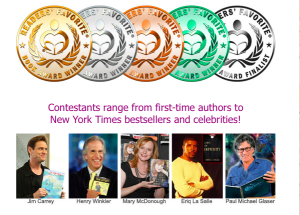 See all Finalists of the 2014 Readers’ Favorite Annual Awards
See all Finalists of the 2014 Readers’ Favorite Annual Awards
Find Alaston, Mênis, Annah, Dan, Manfred and others in the “Daimones Trilogy” – Daimones: Daimones Trilogy, Vol.1 – Once Humans: Daimones Trilogy, Vol.2
– Once Humans: Daimones Trilogy, Vol.2 – The Rise of the Phoenix: Daimones Trilogy, Vol.3
– The Rise of the Phoenix: Daimones Trilogy, Vol.3
The post Finalist 2014 Readers’ Favorite Annual Award appeared first on § Author Massimo Marino.
July 28, 2014
The Writing Process
 (The Writing Process. My apologies, Dr. Seuss)
(The Writing Process. My apologies, Dr. Seuss)
I can write in a car,
I can write by a fire,
I can write in a boat, I can write on a float.
I can write on a table, I can write when I’m able;
I can write anywhere.
Among the questions writers torture themselves with are whether we should write the complete work then edit, or edit as we go along. Should we create biographies of our characters before hand or invent them as we develop the story? Should writers do the first draft by hand then type into the computer or go directly to the computer? Should they have fixed writing hours or not? Is it important to write daily or not?
The answer is yes to all of the above, or not. Confusing? You bet.
I’ve read a few how-to-write books, followed online creative writing courses, read blogs of established authors. All of which I have come through, the amount of contradictory advice is only limited by the number of pages I have read. Does this mean that all writing advices should be disregarded? Not at all – if so I’d give up writing this post or past others about writing techniques.
When I had the venture to discuss with other successful writers about their working habits, I have discovered they are as varied as their personalities. Some are extremely disciplined, they set aside a time each day to write, stick to a minimum number of words no matter what. Others cram writing time around the many responsibilities. If any common factor exists, it is their extreme seriousness about their work.
Many things in this world can be standardized, but standardized creativity is an oxymoron.
The secret is to find what works best for you, and throw away any guilt or inferiority that you are disregarding the advice of Best Selling Author X. Remember, Jeffrey Archer once told would-be writers that the only way they can be successful is to quit their jobs and write full time. Tell that to a single mom trying to finish her first book. The alternative is — of course — getting fired, but that’s another story.
Am I saying the advices of Best Selling Author X, Y, and Z are baseless? Absolutely not. Try their methods, but twist their ideas, adapt them to your needs. You are what you are, if a ‘rule’ existed to describe how to write successful novels, everybody would be a Best Selling Author. Testing allows us to develop new skills, too.
So, shall we continue with the poem?
I can write on my head, I can write in bed,
I can write as I eat, I can write on my feet,
I can write with ink, I can write in a sink;
I can write everywhere.
The important think to keep in mind is that what works for you might be different, and still be the way to go. Have the confidence to do it as well as the wisdom to know when it needs to be changed. And do it without guilt, or shame.
And now that you’ve got here, you can follow my advice, or not, and disregard every word if it doesn’t work for you; and do it with my blessing.
Some Best Advices
“I merely took the energy it took to pout and wrote some blues.” – Duke Ellington.
“Inspiration is wonderful when it happens, but the writer must develop an approach for the rest of the time… The wait is simply too long.” – Leonard Bernstein
Note: I know the first two quotes are about music, but writing music and writing words are variations of a creative process.
“If a man does not keep pace with his companions, perhaps it is because he hears a different drummer. Let him step to the music which he hears, however measured or far away.” – Henry David Thoreau
Note: I know this is often quoted, but whenever I realise the crowd went in the other direction, I realise that it is okay if I don’t follow.
“Write something to suit yourself and many people will like it; write something to suit everybody and scarcely anyone will care for it.” – Jesse Stuart
“I write entirely to find out what I’m thinking, what I’m looking at, what I see and what it means. What I want and what I fear.” – Joan Didion
“A writer is a person for whom writing is more difficult than it is for other people. ” – Thomas Mann
And the last one, which I read almost every day to remind myself that the perfect novel doesn’t exist, and there will always be those who will find diamonds in your stories and those who will find nothing:
“’Tis the good reader that makes the good book; in every book he finds passages which seem to be confidences or sides hidden from all else and unmistakably meant for his ear; the profit of books is according to the sensibility of the reader; the profound thought or passion sleeps as in a mine, until it is discovered by an equal mind and heart.” – Ralph Waldo Emerson
[image error]
The post The Writing Process appeared first on § Author Massimo Marino.
July 23, 2014
Write What You Know
§ Author Massimo Marino - ... A scientist envisioning Science Fiction
I first heard this phrase when I interacted with a peer-review group named the Critters. The group is a member of the Critique.org family of on-line workshops/critique groups, and is for serious writers of Science Fiction, Fantasy, and Horror. You get your work critiqued in exchange for critiquing the work of others, both of which are invaluable ways to […]
July 14, 2014
International Authors' Day
[image error]
 When I started writing I was too young to think of what I was doing and have moments of reflection on crafting a novel.
When I started writing I was too young to think of what I was doing and have moments of reflection on crafting a novel.
My Dad received “Astounding Stories” and I wasn’t allowed to read the magazines but they did have astounding covers; I dreamed about them. Based on those covers, I created stories in my mind, then put them down on paper with a pencil in my little hands so that I could re-read and never forget them.
I didn’t think in those days about plot and action, character development, building my voice, what themes and belief systems I had to, or wanted to cover. The place and the setting came from those cover pictures, and I wasn’t concerned with temporal or structural issues.
Later on, I stopped when I started my studies in Physics at the University. Between that and playing quarterback for the team of Palermo, my home town, chasing girls until I found my future wife thirty-four years ago, put a halt to writing. So it is only when I resumed that forgotten love and got the writing fever again—or my Muse awoke and found me ready—that I started exploring and thinking of these elements in my work.
Suspense is one thing that will keep readers reading; there’s a tension in the pages and it is not resolved: The writer has been busy building suspense. A common mistake I’ve seen with writers still learning the ropes is eagerness with resolving the tension, as if it was a good thing to provide the readers with the resolution on the same page, even; what a missed opportunity. Sure, the longer you wait, the higher the risk of disappointing your readers if the resolution is moot and weak. The readers would go “What! Is that all?”
Keep in mind that suspense is your key factor to have your book defined by readers as a “page-turner”: they want to discover what resolves the tension points in your novel. If everything is in one page, there is no need to turn anything  [image error]
[image error]
You will notice something very interesting that you may use as one of your mantras while honing your storyline: Where there is revelation, there is suspense.
Revelations can fall into many categories, it can be part of the plot, a trait of your main character, an anodyne, thinly disguised detail that goes undetected by most readers, and creates “Ah ha” moments later in the story.
Try thinking of all the possible revelations in your book. How do these fit into your plot outline? If you have many to share with your readers, how can they be distributed in the storyline?
Try not to amass all your revelations together and too early in the book as you need to keep up with the expectations of your readers through some 80,000 words.
Characters are revealed through their actions, what they do and what they say. Drama shows people at their extremes. Your main character must be in the midst of the battle of his or her life, physical or emotional, or an ultimate test, a challenge or crisis of faith. As they say, “If you want to find out what a person is made of, put that person under pressure.”
You’ll also will find that a place or a thing can also function as “character” and be developed. A place, or an object can be charged with emotions and tension to rival with the better developed characters of all stories. You don’t even need to describe your character physically as if you were—and you are, if you do that—telling people about a picture you have of the character. A character is not a pair of blue eyes, blonde hair, fair incarnation, slim or not, tall or short, attractive or repulsive, beautiful or ugly. These are the traits of a cardboard, not a character.
Build your character slowly, with their thoughts, their action, their unique way of interacting with the events in the story and with other characters. This gives them depth, not whether they’re tall and brunette, or short and blondie. You can even avoid telling physical characters and have the reader guess whether they are tall (she’s able to reach the upper shelve without help) or short, she needs to be on her tiptoes. Don’t even tell how they look, show who they are, and the readers will fill in the gaps. If you need a physical trait to be unique and well described (but only if it is *needed* and adds to the story) then introduce that trait *when* needed.
Everyone can describe the picture of a person and tell how s/he looks like, but that’s not character development and—frankly—doesn’t add anything to the reader’s image of who is that person. Forget physical traits, get into the characters’ personality and they will develop naturally and readers will love or hate them, but never indifferent to their fates.
Development and character—and how both are framed by time and place, and their impact on your story is also a key feature of your storytelling. It is a key aspect of your narration: where it is situated at a particular place.
When I am deep in writing a new story, I have places and situations and scenes that build up. I try to view them via a close up on something particular in the landscape, or via a long shot from a mountaintop or a helicopter or any other vantage point from above. I survey the scenery, and I forbid my characters to venture there with me. I explore, trying to “feel” the place well before my characters are allowed in. Then I walk with them, and I hear their thoughts, and question “How do you feel, here?”, “What excites you?”, “What scares you?”, and “Would you go there?” Hearing them say “No” to the last question is usually a good sign that the place needs to be visited in the story 
The plot of your book can be an attempt to illuminate a particular philosophical problem, belief, or snapshot of a world at a particular point in time. In the plot, the writer can and wants to explore underlying belief systems, whether conscious or unconscious.
Artfully understanding and using the thematic elements in your novel will result in a work that can be deep and resonant versus flat and merely 50 shades commercial. Tempting? Instead, here you aim at writing with your heart, questioning your firm foundations of your persona, and forgetting about making more sales, while concentrating on how to better disrupt something inside the reader.
If it bothers you to explore those things, it is a good sign they are good stuff to put the spotlight on in your story. But for this, you need to have the courage to write naked. You will aim at making your work even more resonant and expansive—a book that has the potential to be appreciated by many.
Voice. We’re in the habit of thinking, based on bland television and newspaper reporting, that a homogenized voice is the most objective and appropriate voice for conveying an unbiased story. That may work well for presenting a certain type of general information to the public, but does not serve the richness and color and personal nature of authentic stories, stories that live and breath what life is really like and the gamut of human experience. For this last point, the only reflection I have to share is that your voice develops as an extension of you—the writer—as a character.
When searched for consciously and purposefully it becomes affectation. Don’t fret on finding your voice, it will develop as part of who you are and if you write naked—again! The true worth of a writer is not in his style and voice, but in the feelings and sensations that come alive in the readers.
Daimones (Vol. 1 of the Daimones Trilogy) and Once Humans (Vol.2 of the Daimones Trilogy)
and Once Humans (Vol.2 of the Daimones Trilogy) exist in ebook format, paperback, and as audiobooks produced by Sci-Fi Publishing LCC.
exist in ebook format, paperback, and as audiobooks produced by Sci-Fi Publishing LCC.
Vol.3 is available as ebook and paperback. The Rise of the Phoenix.
Please, visit my Amazon Author’s Page
The post International Authors' Day appeared first on § Author Massimo Marino.
International Authors’ Day
§ Author Massimo Marino - ... A scientist envisioning Science Fiction
When I started writing I was too young to think of what I was doing and have moments of reflection on crafting a novel. My Dad received “Astounding Stories” and I wasn’t allowed to read the magazines but they did have astounding covers; I dreamed about them. Based on those covers, I created stories in […]
July 11, 2014
If Writers Wrote as Some People Talk …
§ Author Massimo Marino - ... A scientist envisioning Science Fiction
Last week I took the tram from CERN to the Cornavin Train Station, in Geneva. It’s a ride of some twenty minutes. At one stop, two young women sat near me. The moment they started to talk I knew they were American: they sprinkled their sentences with “like” and “you know.” I started counting; in five […]
July 7, 2014
Scenes, Stages, and Representations
§ Author Massimo Marino - ... A scientist envisioning Science Fiction
In real life, over-reacting is not kosher. “Don’t make a scene” — we often say whenever things get too emotional. As a writer, though, we have to create scenes both off and on paper and root lots of emotions there. In narrative writing, think in terms of scenes just like scriptwriters do. While writing, we use location, set, props, movement and […]


